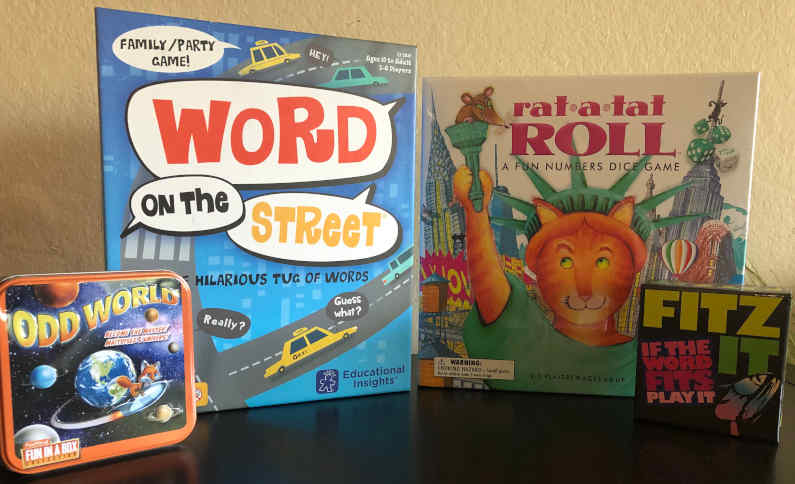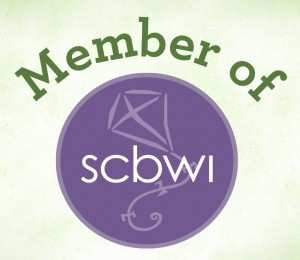6 Questions with Jack Degnan
This week I’m chatting with Jack Degnan, award-winning game designer of such hits as Word on the Street and Rat-a-tat Roll (as well as many others).
I met Jack several years ago at the TAGIE awards in Chicago. If you get a chance to hang out with him, I highly recommended it. He’s relaxed and easygoing, quick with a quiet joke or an appreciative chuckle.
On to the questions!
Question 1
I’d like to start with a question that I know is near and dear to a lot of hearts. Could you talk a little bit about your experience when you were just starting out as a game designer? How long did it take you to go from “I think I want to design a game” to getting one signed? Do you have any suggestions for someone who is considering the same path?
First off, thanks Patrick for reaching out and inviting me to discuss my favorite subject – and for the kind introduction.
Being a board game enthusiast, I had always wondered about inventing games. Several years ago, a simple Google search took me to a workshop on game design led by a successful game creator, Keith Meyers. This workshop was the beginning for me. Keith became a mentor and a good friend. I started creating games in 2005 and my first game was published in 2008. I was fortunate to find this workshop.
I realize that a game design workshop may not be something easy to find; but for someone starting out, I would certainly recommend finding someone with experience in game design and having a conversation with them. I also read a couple of practical books on game design/publication which were very helpful.
Question 2
I talk to so many writers and designers who find themselves blocked by some difficult aspect of their creation. When you’re working on a new design, is there one task that you find the most challenging? How do you work your way through?
It’s comforting to know I’m not the only one who gets stuck. I often find myself in a place where I have a good theme for a game and a good game mechanic but I struggle to make the two fit. I’ve learned that not all my ideas need to fit together. I may need to come up with a new theme for a game – and save the original idea for another game.
I would recommend every game designer keep a journal, the way a writer does. That’s where you keep your ideas that you aren’t currently using. The older I get, the less storage capacity my brain has – so I usually write ideas down as soon as possible.
Question 3
Could you talk a little bit about the process of pitching a game? A question I hear asked a lot, both from writers and game designers, is what a person should do when he or she gets a chance to pitch. If a new designer ends up talking to someone at a convention, either through an appointment or just randomly, what kind of pointers would you give?
Pitching is not something I feel I have mastered. I know I could do a lot better. But I have learned a few things:
- If you only have a half-hour, don’t try to show more than two or three games – especially if a game requires time to get a feel for.
- I make sure that I review the rules of my game before I pitch it. Of course, I know the rules to the games I design. But since I’ve played the game a lot, I may unconsciously leave out something important simply because I know it so well.
- I discuss what I’ve learned from those who have play-tested the game, including surprises I’ve discovered. That way I’m not just giving my opinion about the game – but actually providing observations.
One discovery I’ve made: the professionals in this field are exactly what I hoped they would be – fun, friendly, genuine, and non-intimidating.
My favorite part of the experience with game design is the people I’ve met. No one has given me a reason to feel uncomfortable and many I consider to be friends. Pitching a game is a really fun experience, and I think it would be beneficial for new designers to remember that when pitching a game.
Question 4
Between play-testing and game demos, I know that you have played your games hundreds of times. Do you have any fun player stories? Any moments that stick out to you?
I met someone at a game convention once who told me he played a ‘strip’ version of Word on the Street. Every time one player captured a letter, the opposing player had to remove an article of clothing. That is something I have not been able to forget – and believe me, I’ve tried. I do think it’s fun when I hear that players modify the rules. Maybe there’s a game designer in everyone.
Question 5
What’s your favorite part of designing games? Is there a moment that you look forward to with each new project? Do you ever find yourself saying “this is exactly why I do this.”?
All the time! As I mentioned, my favorite part of the game design process is the people I have met. Every time I attend a game event, it feels like a reunion. But the whole process is enjoyable. Coming up with an idea, turning the idea into a prototype, play-testing, and then fine-tuning is all very mentally stimulating to me.
It’s very gratifying to see people having fun with something I created. The pitch process is like a game itself – and I love games! And the ultimate euphoria is seeing my game on the store shelf… and getting paid for doing something I love.
Question 6
I always end with the same question: what’s next? Do you have any new projects coming out that you can tell us about?
One thing that is new for me is that I’ve been working on a couple of projects with another inventor. Mary Jo Reutter is a dear friend and one of the most creative people I’ve ever met. We have worked on a couple of projects and I’m loving the experience. Our ‘game-storming’ sessions have been energizing and inspiring. It’s a different process when you double the imagination and I’m excited about the possibilities. Hopefully we’ll get something out there together.
Thanks, Jack!
Want to comment? Hit me up on Threads or Facebook!




